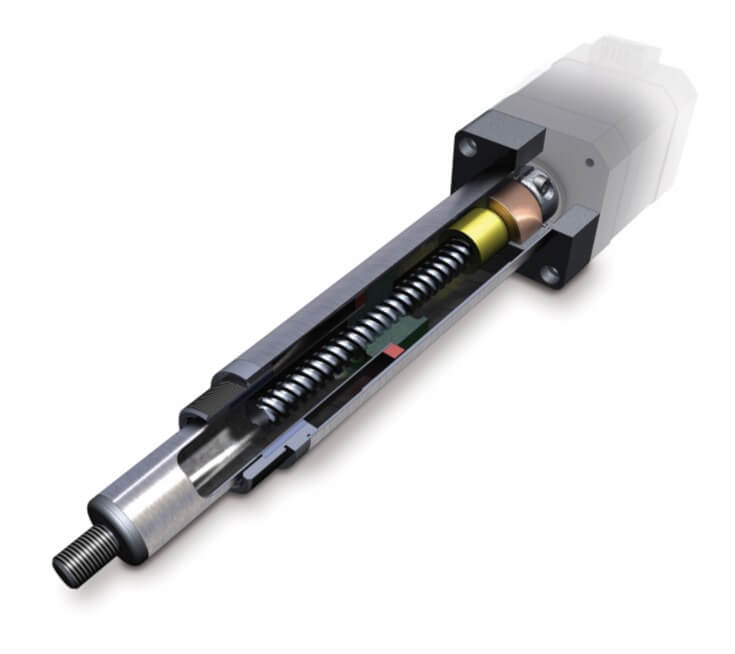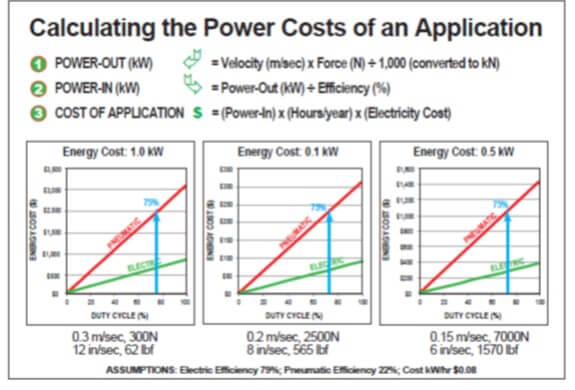Electric linear actuators versus pneumatic: Total cost of ownership
By Tolomatic on November 17, 2015
 Saving money is on everyone’s mind these days, especially when it comes to industrial automation. Automation is recognized as an important way to boost quality and productivity; however, the cost of adding automated systems can be daunting.
Saving money is on everyone’s mind these days, especially when it comes to industrial automation. Automation is recognized as an important way to boost quality and productivity; however, the cost of adding automated systems can be daunting.
To keep costs in line, machine designers are often tasked with finding money-saving solutions. This doesn’t mean using the cheapest components, though. If a component has a low purchase price but is expensive to operate and maintain, it’s not a bargain. Smart engineers look at the total cost of ownership (TCO) of components they’re considering, including linear actuators.
We have studied the TCO of electric linear actuators and pneumatic cylinders. Click here for our new white paper on the topic.
Definitions
Let’s begin with a definition of total cost of ownership.
Total cost of ownership = initial purchase cost + (years of service X yearly operating costs*)
*Yearly operating costs = yearly replacement costs
+ yearly maintenance
+ yearly electric utility costs
+ yearly product scrap
+ yearly lost production due to changeover and cycle times
All these costs vary based on the duty cycle the application requires. Duty cycle is the percent of the machine’s cycle during which the actuator is working.
Duty cycle = time working ÷ (time working + time at rest)
Pneumatic versus electric linear actuators
When you compare electric linear actuators with pneumatic models you find these advantages and disadvantages.
Initial purchase cost
- Pneumatic cylinders are known for their low initial cost and durability. They are simple, easy to operate and provide reasonable control over linear motion.
- Electric linear motion systems offer greater flexibility and accuracy, but they can be more complex and costly than pneumatic cylinders.
Maintenance
- Pneumatic actuators rely on seals to prevent air leaks. Seal wear and resulting leaks are inevitable, and leaks decrease the cylinder’s efficiency, force output, speed, and responsiveness. It can be difficult to predict seal failure, so many plants institute preventive maintenance programs. This introduces costs for time, parts and labor.
- On the other hand, electric actuators demand very little or no maintenance. And because many electric actuators have ball screws as their lead screw an estimation of service life can be calculated using an industry standard ball bearing L10 life calculation.
Replacement costs
- Some plants prefer to regularly replace air cylinders in some applications, especially those with high duty cycles and tight tolerances that would be disrupted by the variable performance wearing seals cause. However, the purchase of replacement cylinders adds cost. Also, replacement adds labor cost, and replacement time takes away from productivity.
- Electric actuators typically have much longer service lives and provide consistent performance throughout that life.
 Electric utility costs
Electric utility costs
- Air leaks are common in pneumatic systems, robbing them of efficiency. In fact, pneumatic systems generally have energy efficiencies as low as 10-30%. This low efficiency leads to high energy costs.
- Electric linear actuators typically offer up to 80% efficiency.
Product scrap
- Use of pneumatic actuators can cause product quality problems. Leaks and failing seals can cause inconsistent performance and poor end product quality. Also, rapid acceleration and deceleration can cause vibration the affects machine performance.
- Electric actuator systems offer smoother action and greater control of force and velocity. They are more consistent, providing better control of end product quality.
Lost production (changeover and cycle times)
- When a product change calls for adjustment of the motion profile, pneumatic actuators require time-consuming manual adjustments.
- Electric linear motion systems can be changed quickly by reprogramming the controller to run a
 different motion profile.
different motion profile. - Pneumatic cylinders operate in a simple open-close, or “bang-bang,” manner. This can mean longer cycle times.
- An electric actuator can move exactly the distance needed and no further, keeping cycle times as short as possible.
When you analyze it all electric linear actuators are often more affordable in terms of TCO, especially in high duty cycle applications.

 Ask an Engineer
Ask an Engineer